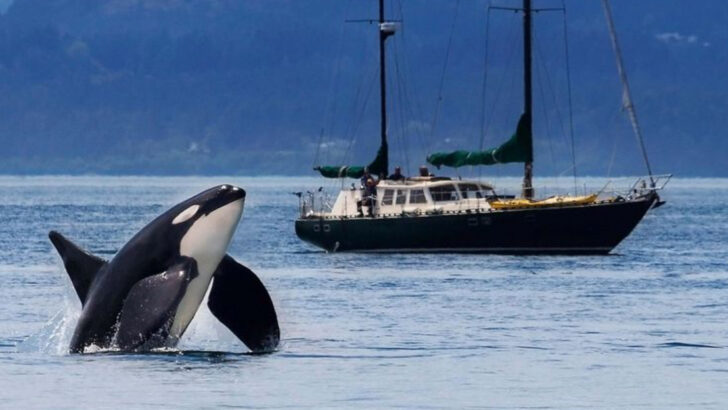Killer whales don’t just rule the ocean— they rewrite the rules.
These black-and-white titans aren’t your average sea creatures. They’re apex predators with a flair for the dramatic, brains that rival primates, and family bonds stronger than steel. Sharks? Please. Orcas turn great whites into snacks and keep swimming like it’s just another Tuesday.
They communicate in dialects, teach their young to hunt with strategy, and mourn their dead. These are creatures with culture, memory, and maybe—just maybe—a touch of mischief.
Whether they’re flipping seals like pancakes or coordinating hunts like a SWAT team, orcas don’t just survive in the ocean.
They own it.
Here are 13 facts that prove it.
Intelligent Communicators
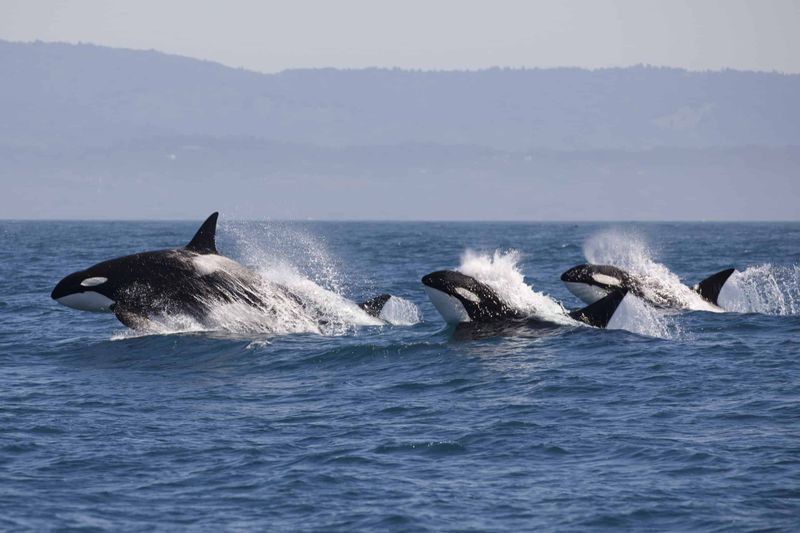
Orcas are renowned for their intricate communication systems. Each pod boasts its own dialect, akin to a family language. These underwater conversations involve a series of clicks, whistles, and calls, forming a symphony that resonates through the ocean depths.
Scientists believe these vocalizations are key to their social structure, allowing them to coordinate hunts and strengthen familial bonds. Imagine listening to an orca pod’s unique chatter, a language as rich and varied as human speech.
This level of communication reflects their cognitive complexity, placing orcas among the most intelligent marine mammals.
Top of the Food Chain
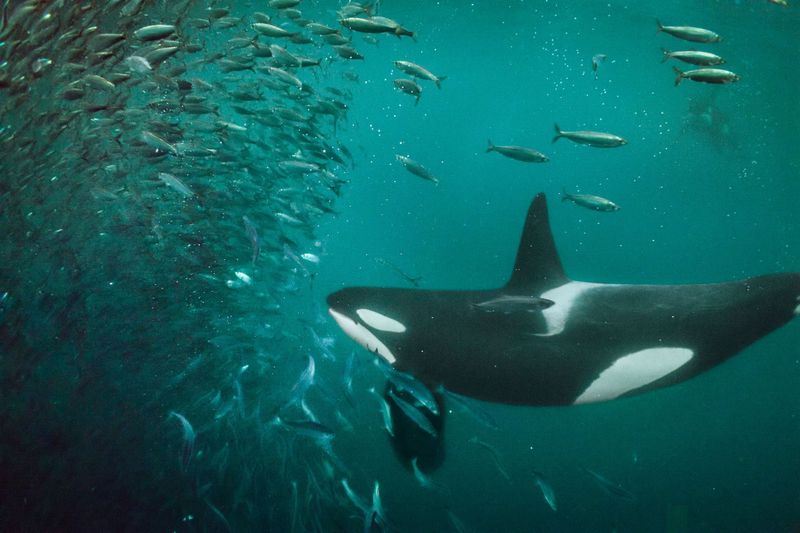
Orcas are apex predators, sitting comfortably at the top of the oceanic food chain. Their diet is as varied as their habitats, including fish, seals, and even sharks, showcasing their versatility and adaptability.
Employing complex hunting strategies, they demonstrate teamwork reminiscent of a well-coordinated orchestra. Picture an orca leading a hunt, its sleek body slicing through the water with precision.
This prowess, combined with strategic intelligence, ensures their dominance. Without natural predators, orcas embody the perfect balance of power and grace in the marine world, making them the ultimate ocean rulers.
Cultural Traditions
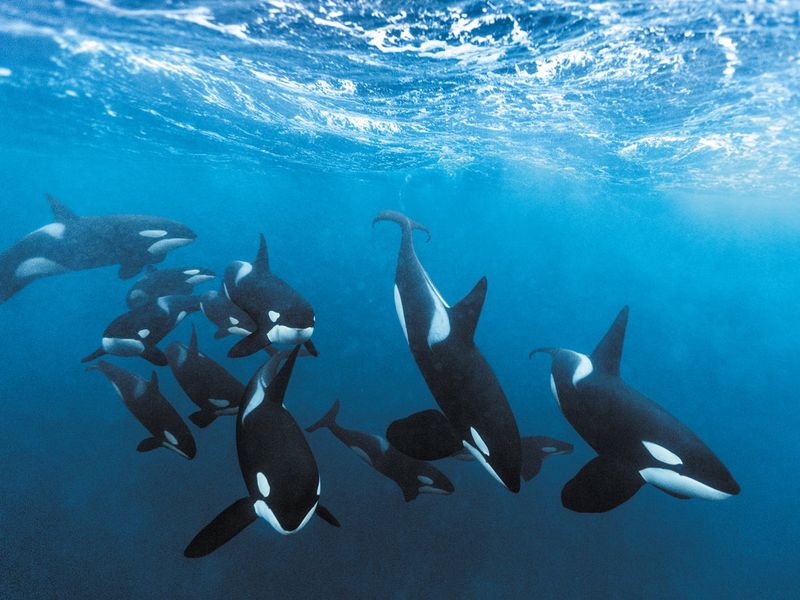
Orcas have fascinating cultural traditions that are passed down through generations. These traditions include unique hunting techniques, play behaviors, and social interactions, which vary between different pods.
It’s as if each pod has its own set of customs and rituals that define their identity. Envision a young orca learning the ropes from its elders, absorbing the rich tapestry of its pod’s culture.
This passing of knowledge highlights orcas’ sophisticated social structures and their ability to adapt to changing environments. The cultural diversity among orca pods adds depth to their enigmatic existence.
Global Wanderers

Orcas are true global wanderers, inhabiting oceans from the icy Arctic to the warm tropical seas. Their migratory patterns are dictated by prey availability and environmental conditions.
Picture an orca gliding through the turquoise waters of the Pacific, then imagine it navigating through icy fjords. This adaptability to diverse habitats underscores their resilience and survival instincts.
As they traverse the globe, orcas contribute to the ecological balance of marine ecosystems. Their presence in varied waters is a testament to their adaptability and dominance in the ocean world.
Family Ties
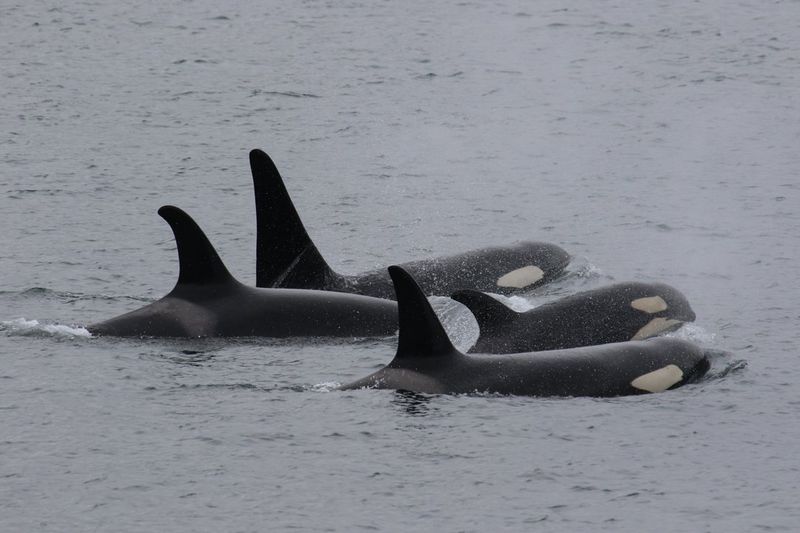
Family ties among orcas are incredibly strong. Living in matriarchal pods, these social units can consist of mothers, offspring, and extended family members. Picture a grandmother orca guiding her pod, her wisdom shaping future generations.
This familial structure ensures the survival and success of their lineage. Orcas teach their young essential survival skills, fostering a sense of community and cooperation.
These bonds are not just biological but emotional, reflecting their complex social lives. The dedication to family showcases a deep-rooted loyalty and unity within orca pods.
Masterful Hunters
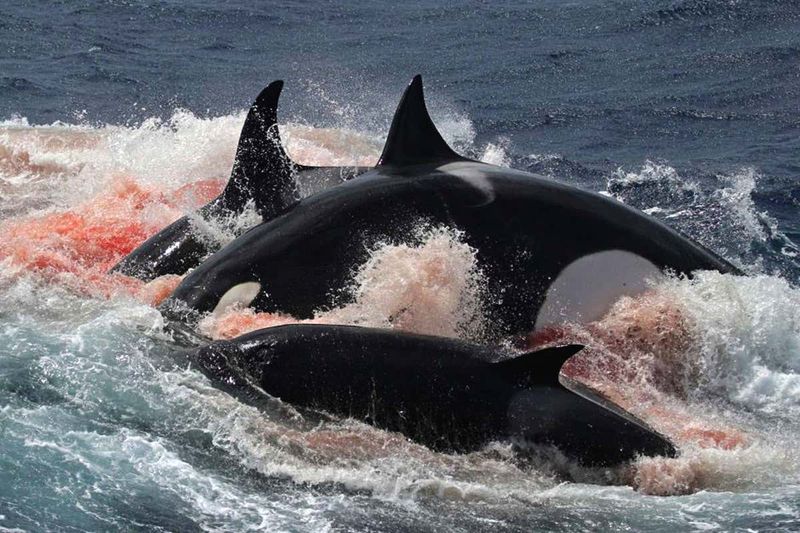
Orcas are masterful hunters with strategies that rival human ingenuity. They employ techniques such as wave washing, where they create waves to knock prey off ice floes. Envision a group of orcas executing a synchronized attack, their movements perfectly timed.
This level of cooperation and precision highlights their strategic thinking and teamwork. Orcas’ hunting prowess extends to diverse prey, from fish to larger mammals, showcasing their adaptability.
Their status as master hunters is a testament to their intelligence and dominance, ensuring they rule the marine realm with unmatched expertise.
Distinctive Appearance
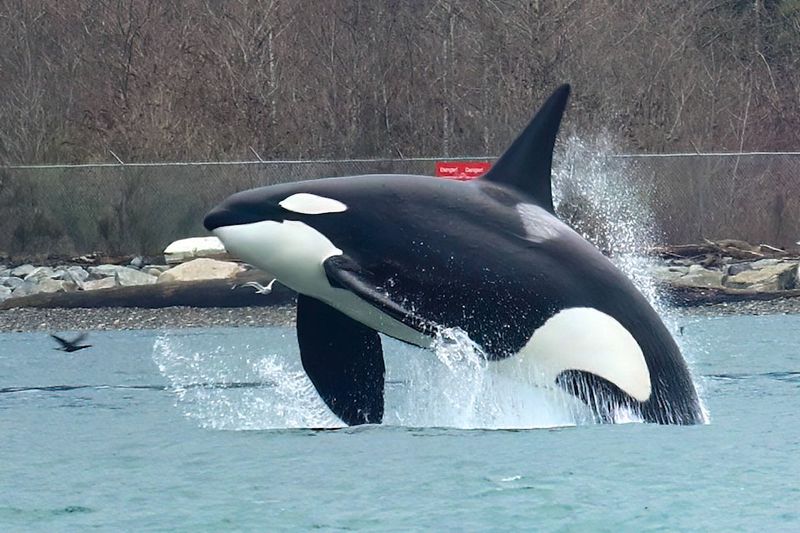
The distinctive black-and-white coloration of orcas serves a purpose beyond aesthetics. This striking pattern provides camouflage, blending with the ocean’s light and shadow.
Imagine an orca’s sleek body gliding through the water, its coloration allowing it to approach prey undetected. This natural disguise aids in their hunting strategy, enhancing their efficiency as predators.
Beyond functionality, their appearance captivates onlookers, earning them the name “sea pandas.” The elegance and practicality of their coloration are yet another aspect that underscores their supremacy in the ocean.
Sophisticated Echolocation
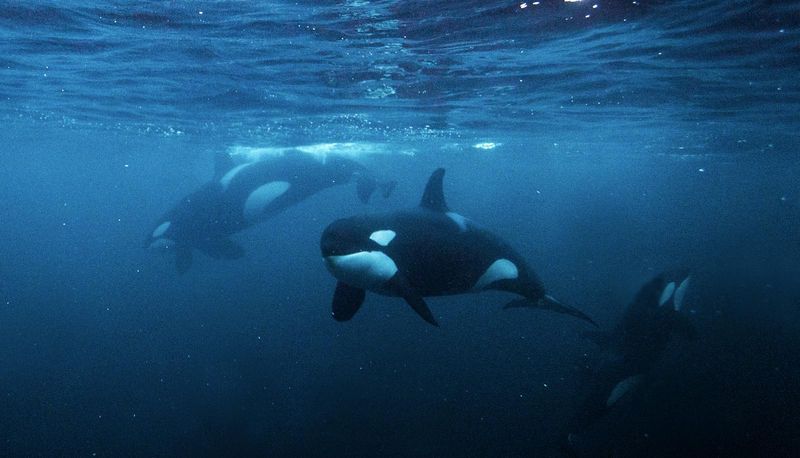
Orcas possess sophisticated echolocation abilities, allowing them to navigate and hunt with precision. Using sound waves, they create mental maps of their surroundings, even in the darkest depths.
Picture an orca sending out a series of clicks, then interpreting the echoes to locate prey or avoid obstacles. This sensory adaptation is akin to having a built-in sonar system, providing them with a significant advantage in the ocean.
Echolocation exemplifies their evolutionary ingenuity, enabling them to thrive in diverse marine environments. It’s a vital tool in their dominance over the seas.
Powerful Swimmers
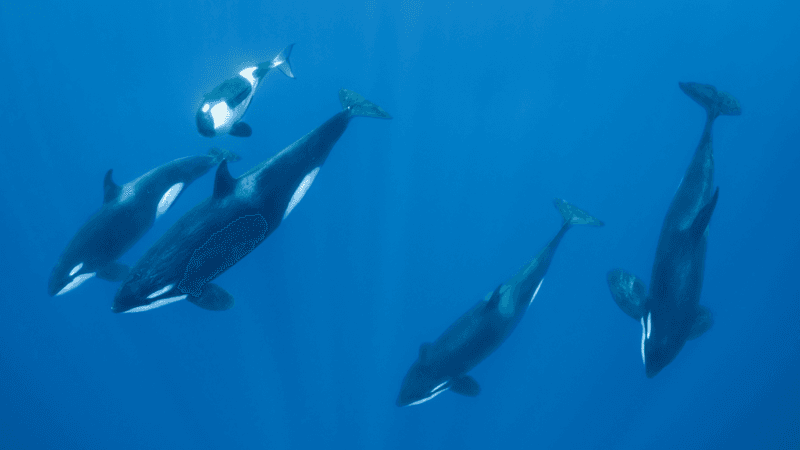
Orcas are powerful swimmers, capable of reaching speeds up to 34 miles per hour. This incredible agility allows them to cover vast distances and pursue fast-moving prey. Imagine an orca leaping out of the water, its muscular body propelling it through the air.
Their streamlined physique and strong tails contribute to their swift movements, enhancing their hunting efficiency. Whether cruising the open ocean or darting through tight spaces, orcas’ swimming abilities are unmatched.
This athleticism is a key factor in their role as ocean rulers, marking them as formidable predators.
Complex Social Structure

The social structure of orcas is complex and hierarchical, often compared to human societies. Within pods, individuals have specific roles, ensuring the group’s cohesion and success.
Envision a pod working in unison, each orca playing its part in the intricate social web. This organization facilitates cooperation in hunting and nurturing young. Their social intelligence is evident in their interactions, fostering bonds that last a lifetime.
This complexity adds depth to their dominance, as they navigate the ocean not just as individuals but as tightly-knit communities. Their social sophistication is truly extraordinary.
Caring Nurturers
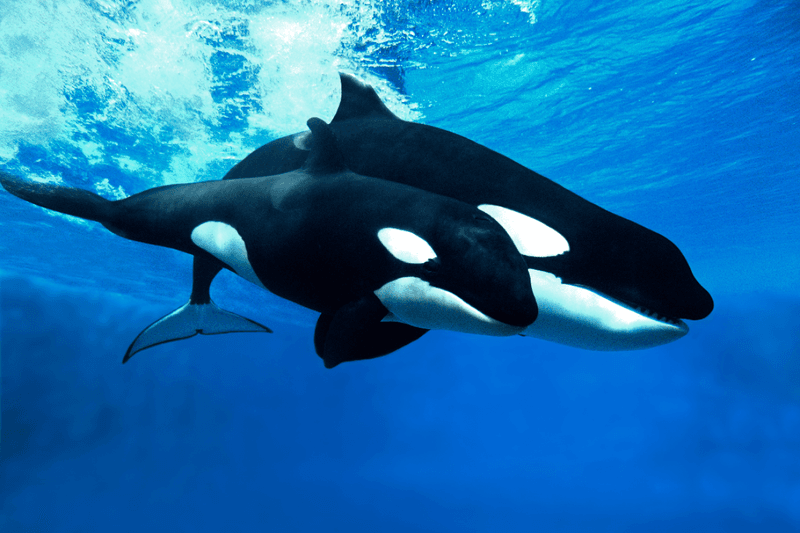
Orca mothers are nurturing caregivers, investing significant time and effort into raising their young. The bond between a mother and her calf is profound, with the mother teaching survival skills and providing protection.
Visualize a mother orca guiding her calf through ocean currents, imparting wisdom with every movement. This nurturing behavior ensures the next generation’s proficiency and survival.
The transfer of knowledge from mother to calf reflects their social complexity and emphasis on family. This nurturing aspect is a cornerstone of their social structure, contributing to their enduring legacy in the ocean.
Acrobatic Entertainers

Orcas are not just hunters but also remarkable entertainers. Their acrobatic displays, including breaches and tail slaps, captivate those lucky enough to witness them. Picture an orca soaring through the air, its powerful body twisting in mid-flight.
These behaviors are not only awe-inspiring but also serve communication and play purposes. The joy and exuberance seen in their actions reflect a playful side, adding depth to their multifaceted nature.
Orcas’ acrobatics highlight their physical prowess and ability to engage with their environment in lively, dynamic ways.
Long Lifespan
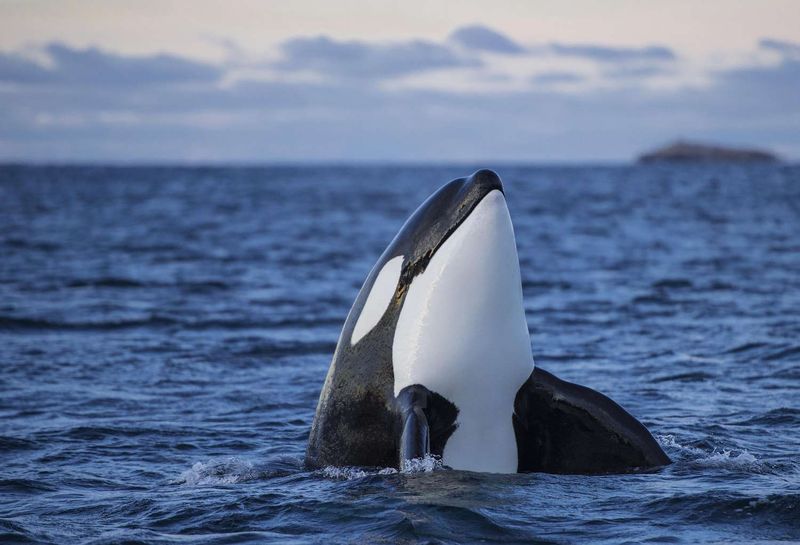
Orcas enjoy long lifespans, with some individuals living over 90 years. This longevity allows them to accumulate knowledge and experience, which they pass down through generations. Imagine an elder orca, a repository of wisdom, leading its pod with grace.
Their extended lifespan contributes to their complex social structures and cultural richness. This longevity ensures the continuity of traditions and knowledge, embedding them deeply in the ocean’s history.
The resilience and survival of orcas through the ages underscore their unparalleled dominance in the marine world, as they continue to thrive across generations.

